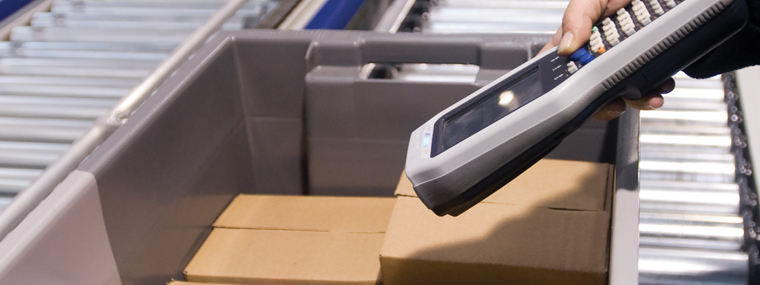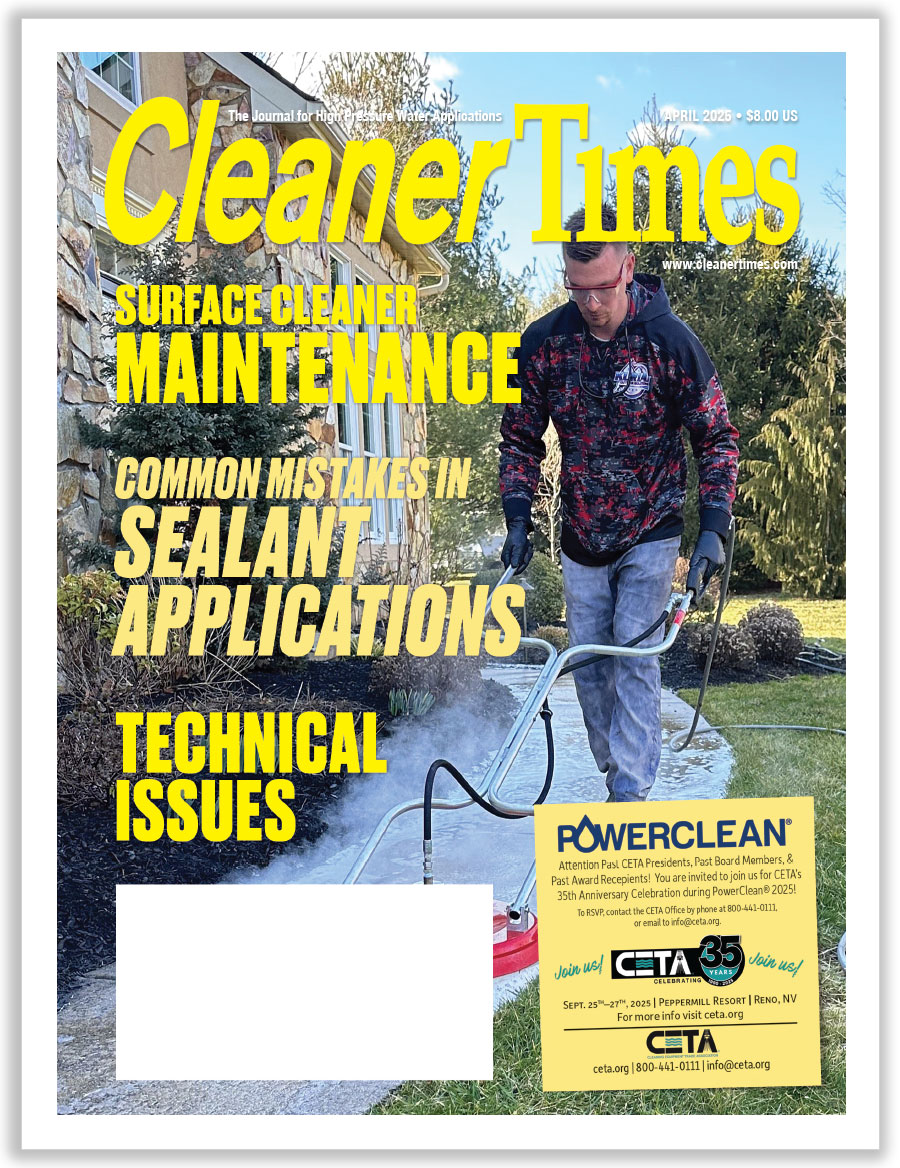
Running an Efficient Shipping Department
By Diane M. Calabrese / Published June 2017

Well worth the wait…there’s a quaint sentiment. We are a long way from the time anyone (potentially) sang about the arrival of a Wells Fargo wagon carrying their cross-cut saw or bathtub.
Packages of all sorts now arrive throughout the day, delivered by carriers as familiar as UPS and FedEx and as mysterious as vehicles without markings can be in 2017. Perhaps here and there a few recipients do actually greet their boxes with a song.
Certainly, there will be no melodic voices heard if a shipment arrives damaged or late. A shipping department is efficient only if it simultaneously achieves accuracy, speed, and economy, and gets the goods there in perfect condition.
Responsiveness is a must. “We’ll get an order over the phone or fax, our guys put it on a pallet and shrink wrap it—[and it ships out] all in a day,” says Jake Clark, owner of Armstrong-Clark Company in Sonora, CA.
As for which carrier, it depends, explains Clark. “It’s very competitive.” Take advantage of the willingness of carriers to talk about rates “to get a competitive price.”
For LTL (less-than-truckload) shipment of palletized loads, Clark likes XPOLogistics. Making the decision on a carrier depends on weight and class assigned by regulators. He often ships small boxes by UPS Ground or FedEx Ground. Sometimes a buyer will ask that a certain carrier be used. All the companies mentioned by Clark and others offer an enormous amount of assistance with helping shippers make optimal choices.
Above all, though, make certain the carrier standards are exacting. “Look for a national carrier with a good reputation,” says Clark. “You really want the package to arrive in good shape,” explains Clark. A small imperfection in the packaging caused by a bump in transit may have no bearing on the integrity of the product inside, but perception matters. “If you have a really smart looking shipment, they treat it better,” says Clark. “Damage goes down.”
Extra investment in packaging can pay for itself because it results in happy customers and minimal loss or damage claims. “We buy edges—supports for boxes on the sides,” says Clark, citing one method for improving appearance and strength of a load. “It shows we’re professional.”
There’s also something to be gained from establishing a personal contact with the recipient. “We put a little card under the shrink wrap, a five-inch by six-inch thank-you note from ‘The Armstrong-Clark Gang,’” says Clark.
Because his team of five is of modest size, Clark notes that he has more flexibility in making changes quickly. Anyone can call a meeting—sitting on a convenient bucket—to discuss an idea or go over a new procedure.
Flexibility is useful, but it does not mean that changes are made to chase the lowest cost options for shipping. “We get bombarded by brokers,” says Clark. He listens to them, but he prefers staying with tested entities.
Once with a brokered shipment, Clark had reports of coating dripping when the truck was opened. “It’s never worked,” says Clark of trying a broker. “We have not had success.”
Q&A With Phil Kirby
Phil Kirby, who is the Pressure-Pro (Ft. Pierce, FL) warehouse and distribution manager for Nilfisk High Pressure Washers, kindly answers some questions about running an efficient shipping department.
Cleaner Times [CT]: What’s a good place to begin when reviewing the efficiency of a shipping department?
Kirby: The best way to keep efficiency in check within a shipping department is to have standard operating procedures (SOP) in place for every general task performed. SOPs will assist key point indicators (KPI). Having structure for identifying opportunities is key to continuous improvement. Without KPIs as a benchmark, you are not in line for your team to improve.
When it comes to efficient packaging, you must keep in mind the volume and capacity your departments are exposed to. While there are
automations and more manual applications, your volume is what will determine what packing materials you will need. Once you have determined your types of packaging, the best way to improve packaging is to receive feedback from the customer and your team members. Unsatis-factory feedback should be reviewed immediately. There is always room for improvement in how and what items are packaged in.
Through-flow is a very important aspect of a warehouse. Having a warehouse set up properly is key to efficiency. Each item’s location is very important. Having high volume items at ground level and items specific to certain shipping departments located near the shipping departments makes the picking process more efficient. Once items are picked, the area designated for packing must be set up with a positive work flow. Items should be processed in a way to not cross the room or area, but have a fluid flow in one direction.
Speed can be measured more efficiently with a warehouse management system (WMS) rather than physical time studies. Having time-measured check points within the process of pick-to-ship is key to improving efficiencies. Reviewing the history of these studies will indicate where a process needs improvement.
Accuracy improves dramatically when good processes are in place. At our facility, we have a double-check system in which a person who is qualified will reconcile what is being picked. The picker approves by signing off on their picking ticket, then a qualified team member signs off that the items have been reconciled. This system is not perfect, but it enables us to have two sets of eyes on each item prior to being shipped. Quality control at the time of receiving goods is vital to accuracy as well.
CT: What’s the best piece of advice you ever got about improving the efficiency of your shipping process?
Kirby: The best piece of advice I have received about improving efficiency in our shipping departments came from the Web. There are too many to list. There is an abundance of information online—some more applicable than others.
CT: Does your company undertake any of its own deliveries? If so, can you tell us a bit about the geographic range served and when you switch to a common (contract) carrier?
Kirby: Our company does have a delivery service; we deliver to most of Florida. The exceptions are the Florida Keys and the Panhandle of Florida. We utilize common carriers to provide service to both.
CT: How should a business choose a common (contract) carrier?
Kirby: When choosing a less-than-truck-load freight carrier (LTL), we generally freight shop different carriers to get rates and then pick between the companies we believe will move the freight in a timely manner without compromising quality. We categorize different companies per damage history and ease of dealing with freight claims. We also utilize different common carriers for different items we sell. Most of the time it is based on pricing. We do make exceptions based on damage history in certain lanes or certain items.
CT: What should we have asked?
Kirby: How should a business choose a PTL or FTL (contract) carrier? FTL is a full-truck-load contract haul. PTL is a partial-truck-load contract haul. We utilize these two methods when the pallet count or weight gets too high to move through common carriers. We rate shop multiple logistic companies for quotes and secure the best logistic company for that load. Price and quality are the determining factors. We have used both methods to avoid freight damage as well. It is wise to check rates on both methods when dealing with a pallet count of seven or more. Sometimes you can secure a FTL faster and at times cheaper than a PTL. We generally look at PTL rates for a pallet count of seven to 18 pallets and FTL for 16-plus pallets.
[LTL] is handled many times before delivery. This usually results in damage to some magnitude. PTL is a consolidated shipment in which someone else’s freight will be traveling with yours. You may not like some of the items that brokers arrange with your freight on PTLs. FTL is a door-to-door (A to B) shipment that includes no one else’s freight but your own. We seal the doors on FTL shipments.
Worth Repeating
Good advice bears repeating. In the April 2015 issue of this magazine, we looked at shipping from a slightly different angle—as an integral component of business. See the article at www.cleanertimes.com/magazine/cleaner-times-articles-2/evaluate-your-shipping-a-significant-part-of-doing-business for a refresher on related topics. For example, compliance with hazmat regulations can add to shipping costs because of extra charges from carriers. And hazardous materials require a signature for receipt, which limits the carriers willing to deal with them.
Take the time to explain shipping parameters to customers. Informed customers allow a company to run an ever-more efficient shipping department. Such customers are more likely to consolidate orders and to trust the seller’s recommendation on carrier. Moreover, with the interest across industries in a greener approach to business, efficiencies gained in shipping correspond to a net positive for the environment—reduced fuel use and less packaging lead to fewer undesirable emissions.





